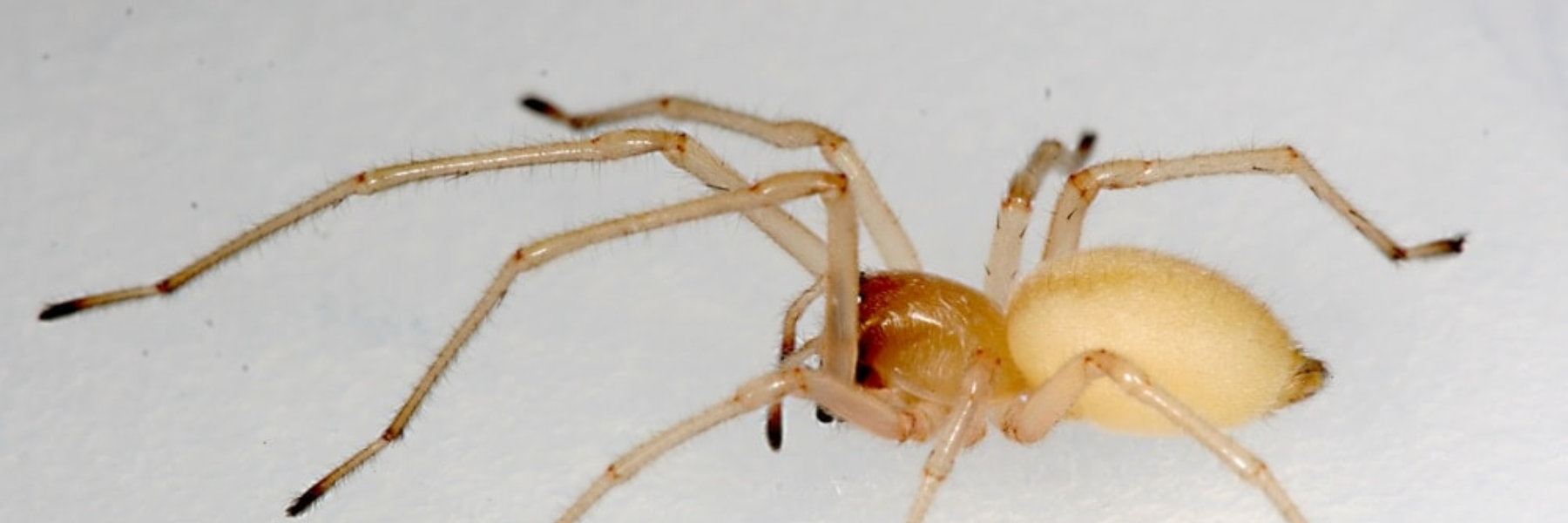Whether outside in the garden or inside the house, agrarian sac spiders are usually unwelcome visitors for homes and businesses in Doylestown. While they provide some natural pest control outdoors, they are generally not wanted inside. Additionally, their bites can be extremely painful.
Bites typically occur when people accidentally come into contact with these spiders. As fall approaches, they seek shelter indoors to escape cold and rainy weather. These spiders are adept at hiding, making bites more likely when they take refuge in piles of laundry or bedding.
While their bites can be painful and may cause skin damage, no over-the-counter chemical treatments are specifically effective against them. The best approach is to eliminate their food sources and block entry points to prevent infestations.
Professional pest management services can help identify insect populations that attract agrarian sac spiders and seal potential entryways to keep them from invading indoor spaces.

Agrarian sac spiders are identifiable by their long, delicate legs, with the front pair being significantly longer than the others. They are typically cream-colored or light yellow, with dark brown tips on their tarsi and chelicerae. Some may have a darker dorsal stripe along their abdomen.
Males range from 4-8mm in size, while females grow slightly larger, reaching 5-10mm.
Although they spin webs, these spiders do not use them to catch prey. Instead, they create tubular silk sacs resembling sleeping bags, where they rest during the day. These sacs, often about an inch long, are a key indicator of an infestation.
They prefer undisturbed areas such as attics, basements, crawl spaces, garages, and sheds. Inside homes, they may nest in wall-ceiling joints, behind furniture, or in cluttered areas. Outdoors, they shelter in leaf litter and plants. At night, they emerge to hunt, sometimes using silk threads to travel across distances.
These spiders are active hunters that chase down their prey. They are fast movers and feed on various insects and arachnids, many of which are garden and agricultural pests. When food is scarce, female spiders may even consume their own eggs.
Although their bites are painful, these spiders are not inherently aggressive. They bite when they feel threatened, often occurring when disturbed inside clothing, bedding, or while working in the yard.
While their venom is not deadly, it contains cytotoxins that may cause tissue damage in rare cases. Most bites result in red welts, but excessive scratching can lead to infection. Some individuals may experience allergic reactions, including nausea, headaches, and dizziness. If a bite is not healing properly, medical attention is recommended.
Signs of agrarian sac spider presence include:
If an infestation is suspected, professional pest control services are recommended. Female spiders can lay up to 200 eggs per mating season, increasing the risk of widespread infestations.
At Newtown Termite & Pest Control, we take spider infestations seriously. Our comprehensive approach includes treating wall voids, attics, and crevices with specialized gels, dusts, and other effective products.
Learn more about our spider control services.
Call 267-297-1830 to schedule a FREE inspection today.
GET THE FACTS